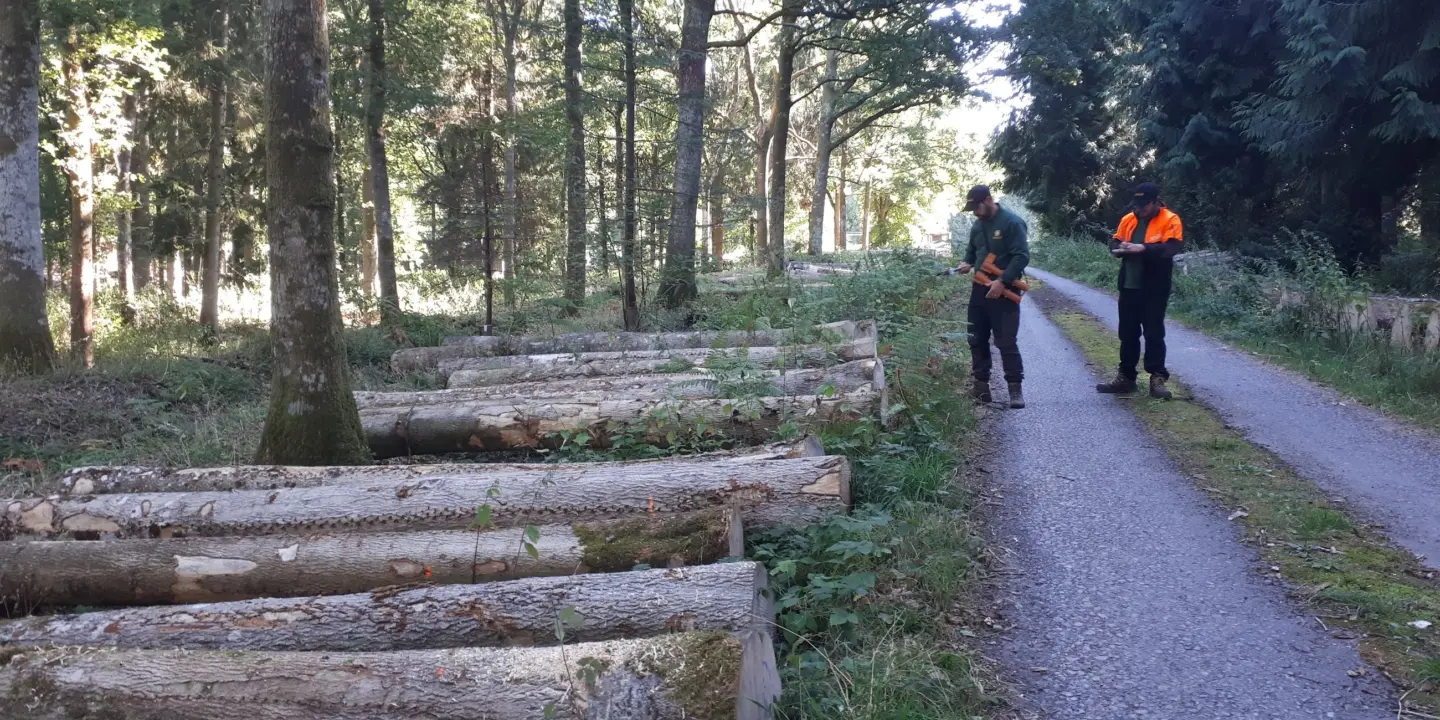

Where does Brimstone wood come from?
The timber we use at Brimstone is sourced from well managed woodlands, which are as close to our saw mill as possible.
One of these woodlands is the Longleat Estate, which is less than 30 miles away from the Vastern Timber sawmills, where we produce Brimstone wood.
An introduction to Longleat
Longleat is well known for its safari park and as a holiday destination, but the estate offers much more. It includes over 4000 acres of forest, which is managed as continuous cover forestry. It's a biodiverse landscape with a well-managed woodland, producing excellent timber.

To find out more about this special place we joined our log buyer, Rupert, on a recent visit.
Here we met head forester, Jim McConkie, at an area known as Norwich wood, a planted ancient woodland by Cley Hill in Wiltshire.
We asked Jim a few questions about the woodland.
What kind of trees and wildlife can you find at Longleat forest?
Jim: It is a diverse woodland here, with plenty of wildlife. In fact, we recorded over 100 moths in our recent moth survey.
In terms of trees, we have ash growing amongst the oak, although unfortunately we have ash dieback disease. We’ve been removing affected trees to combat this. Hence why Vastern Timber is here to take this ash to the sawmill.
There’s probably about 5% natural resilience to dieback here. We have a few ‘green’ ash and we’re very happy we have them. We’ve given our details to the Future Trees Trust to assess these trees as part of the Living Ash project
Does most of your timber go to sawmills?
Jim: Longleat forest is about 4000 acres. The annual growth rate is about 20,000 cubic metres of wood, and we harvest up to about 10,000 cubic metres.
Some goes to our firewood business and ‘lower markets’ like biomass and chip, but most of it goes to sawmills. We’ve got great form to our trees as they’ve been nurtured well.

Us: What makes this woodland special?
Jim: We’re within a few hundred metres of Cley Hill, a scheduled ancient monument. We call it Wiltshire’s own version of Ulharu.
This place has been used for ceremony and ritual for centuries, and the woodland has been worked by people for millennia. The woodland itself is recorded as ancient and it’s a very special place. Its soils, its wildlife, its insects, all of it – it does have a unique feel to it.
It’s also quite flat here, which is interesting. To have woodland on such fertile ground in Wiltshire is quite unusual.

Us: You mentioned that the forest floor is more important than the trees that grow from it - can you explain why?
Jim: I love learning about the forest floor. The soil structure here is as old as the last ice age. The sediments, percolation of water and the fungi is very, very important. The crops on top - the trees, the habitats - are always changing, but the soil remains.
The top layer of the soil is a seed source that can last much longer than the trees on top of it. Take one of our wildflower seed banks as an example. We had conifers over the top of this area for over 60 years, but then as we started thinning and extracting single trees and groups in continuous cover forestry, the sunlight reached those soils more often (say every 30 years). As the seeds grow and flower they release more seeds back into the soil. And so the cycle continues.
The soil is incredibly important and we need to look after it. We have to look beyond what we’re attracted to as foresters and sawmillers, and make sure we take a long term view. One that will allow many more generations of trees, flora and fauna to thrive.
How to get your hands on this special timber
Although we’ve taken some of this unique wood to our saw mill, you won’t be able to get your hands on it just yet. Sorry.
Some of the smaller oak sections will be available as ‘green’ oak beams within a few months, sold at Vastern Timber. This particular batch of Brimstone ash will be ready next year.
The larger oak butts will take longer to season and process, so won’t be available for a few years yet. But don’t worry if you can’t wait that long, we have plenty of oak and ash ready to buy now. You can visit us at our Wiltshire sawmills or find out more on the Vastern Timber website.
Thank you to Jim McConkie for sharing his knowledge about the Longleat estate.


This beautiful renovation project is one of a kind. Once an old threshing barn, it has been transformed into a family home, studio and wildlife haven by landscape architect and owner Toby Diggens.

It’s not standard practice to use local wood - but we’re on a mission to change that.